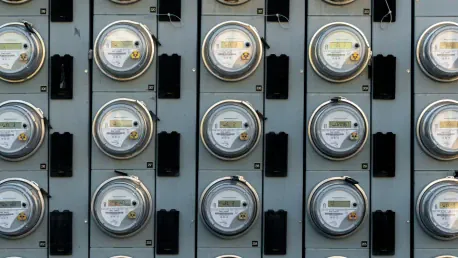Listen to the Article
The utility industry is considered indispensable in the composite world. Companies in the field provide necessary services such as electric power, gas, water, and waste disposal. However, most are privately owned and closely monitored to supply service at fair rates.
As of 2022, essential services had a market capitalization of over $1.58 trillion. Its stocks are often regarded as long-term investments, offering stable income streams through dividends, especially during economic volatility.
Key points you will learn more about in this article:
The sector comprises businesses supplying electricity, gas, water, and sewage.
It is typically robust and thriving during adverse economic situations but has concerns about regulatory challenges and the high costs of necessary infrastructural transformations.
Utility stocks are generally slow moving, often bought with a focus on the dividend yield required.
Advancements in clean energy should result in rapid growth in the future decades.
The main objective of this article is to establish the merits and demerits of investing in the domain and the efforts that influence its market performance.
Stable Returns Amid Economic Fluctuations
Some essential services are considered special investments due to predictable cash flows and payouts. For this reason, these stocks are said to be defensive, as they tend to do well regardless of the prevailing economic conditions. Holders usually buy utilities for revenue production instead of a spike in the stock’s price per share.
Water and power providers are part of capital-intensive branches, which means they need significant capital to invest in fixed assets. Most of these industries typically have high leverage. Due to this, players are subject to fluctuations in interest rates because they affect the borrowing cost and the profit margin. When interest rates rise, utility stocks may not look as appealing. This is because other investments, like bonds, offer better returns than these stocks.
The Pros of Investing in Essential Services
Stable Dividends and Income Generation: Reliability and predictability are valuable for companies in the water/power domains. These corporations usually have stable revenues and profits. Investors who seek income value utilities because they often pay consistent and predictable dividends. People, especially those in retirement, buy these stocks for regular income.
Utility Stocks Are Stable During Economic Ups and Downs: When the economy slows down or faces uncertainty, utility stocks tend to hold their value better than many other industries. This is because essential services are, well—essential and necessary, unlike many other businesses that can struggle significantly during a recession.
Lower Volatility: These stocks tend to have small price changes compared to the overall market, making them a lower-risk option for investors seeking stability. Their limited response to market movements is beneficial not only for potential returns but also during unstable times.
- Attractive for Long-Term Investors: Some stocks in the sector can offer capital gains and steady income. Full-form funds are suitable long-term investments that help you build a portfolio focused on dividend income.
The Cons of Investing in The Public Sector
Regulatory Oversight: Utility enterprises face a challenge because they are heavily regulated. State public commissions oversee the rates these providers charge and the quality of their services. In most cases, this hinders a company’s revenues and development.
Expensive Infrastructure and Maintenance: Maintaining and improving infrastructure is expensive, so many essential services firms rely on debt to cover these costs. As a result, they are sensitive to changes in market interest rates. While significant investments are crucial for growth, they can limit the funds available for paying dividends or investing back into the business.
Debt Sensitivity: Organizations that rely on credit have a lot of debt, so higher interest rates can be a severe threat to them. If rates rise, power and water providers again have to take out loans, which can reduce their profits and lead to lower dividends. As mentioned in the previous section, higher interest rates can make other investments, like bonds, more appealing than utility stocks.
Limited Growth Opportunities: The trade is relatively saturated, and as such, most service-based networks are slow-growing. Though there has been consistent evolution in infrastructure and global interest in clean energy solutions, the areas with the most promise are relatively small compared to industries like technology and healthcare.
ETFs, Dividend Yields, and Interest Rate Sensitivity
People can invest in essential services directly by purchasing individual stocks, ETFs, or mutual funds. Dividend yields usually ensure that utility stocks are among the preferred stocks for income investors. Situation two is low interest rates, in which utility stocks are favored because they yield more than other investment forms.
There is one well-known ETF for investing in firms within the branch: the Utilities Select Sector SPDR Fund, or XLU for short. As of 2022, XLU has an approximately 3% annual dividend yield, outperforming the S&P 500 index dividend yield. Likewise, the Fidelity Select Utilities Portfolio (FSUTX) gives access to 29 utility firms and boasts a DIV/Y of 1.52%.
But when interest rates increase, people might turn away from these stocks and invest in bonds like Treasury since they yield higher returns.
Major Players and Their Impact
Companies that provide citizens with public services, including electricity, water, and gas, are under the control of the government to ensure that they sell their products at reasonable prices, even though they are primarily private ventures. Some of the largest utility players in the U.S. include:
NRG Energy (NRG): An American power generation company that deals in electricity generation and distribution as well as natural gas to the residential, commercial, and industrial sectors in North America.
PG&E Corporation (PCG): A Californian enterprise that provides electricity and natural gas to numerous consumers.
NextEra Energy (NEE): The largest in the world by market capitalization, it specializes in clean energy generation and distribution of traditional energy.
Shifting Toward Clean Energy
The infrastructure domain is transforming with a focus on clean and renewable energy sources. Initiatives to abandon fossil fuels and embrace green energy, including wind, solar, and hydropower sources, are revolutionizing the energy industry. Some policies, such as the Infrastructure Investment and Jobs Act, have been catapulted by the government into the market. This act provides $65 billion for upgrading the transmission network.
In 2020, the Democratic-led government of the USA established targets of net zero emissions by 2050, and many businesses are already changing direction to pursue the goal of carbon-free electric generation. This should support long-term development as essential services continue to look for ways to invest in technologies and systems for a low-carbon economy.
Conclusion
The utility field is a good long-term investment option because many companies offer solid dividend yields. Although this field is stable and has predictable cash flow, investors should know about challenges like regulation, infrastructure costs, and sensitivity to interest rates. As the world focuses more on renewable energy and governments invest heavily in infrastructure, the sector’s future looks promising.









